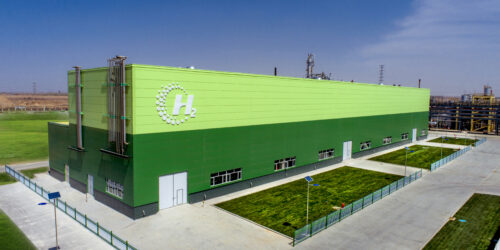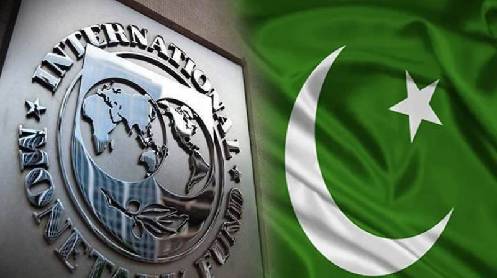UK’s gas grid will be ready to blend up to 20% hydrogen into gas networks across the country from 2023, the Energy Networks Association said in a statement Jan. 13.
ENA called on the UK government to increase its hydrogen production capacity target to 10 GW by 2030, up from the current target of 5 GW by that date, to ensure sufficient supply is available, and encourage domestic production.
It also called on the government and regulatory bodies to make the legal changes required for gas network companies to start blending hydrogen into the gas grid from 2023.
“Whether it be heating our homes, powering our businesses or generating cleaner electricity, hydrogen will help drive up our energy security, while driving down our carbon emissions,” ENA CEO David Smith said in the statement.
A 20% hydrogen blend in the gas grid would save around 6 million mt/year of CO2, ENA said.
The CO2 savings amount to a reduction of around 6%-7%, as hydrogen has around a third of the calorific value of natural gas by volume.
Beyond the 20% level, domestic boilers need to be changed to run on higher mixes of hydrogen, which is the main constraint to hydrogen blending at present, National Grid Project Director for Hydrogen, Antony Green, told S&P Global Platts in an interview in 2021.
ENA said an increased UK hydrogen production target would help protect consumers from the sharp fluctuations seen in international gas markets in recent months.
The statement from ENA comes after a successful trial that saw a blend of 20% hydrogen introduced into the natural gas supply in the UK in 2021.
HyDeploy, the first project in the UK to blend hydrogen into a gas network, saw 100 homes and 30 university buildings on a private gas network at Keele University receive the blended gas for a period of 18 months ending in spring 2021.
Blending up to 20% hydrogen into the gas grid is subject to a final decision by the UK government in 2023.
UK domestic consumption accounted for almost 300 GWh of gas demand in 2020, up 1.5% on the year, according to government data. Provisional data for the first three quarters of 2021 showed domestic consumption totaling 217,000 GWh, compared with 195,000 GWh in Q1-Q3 2020.
Platts assessed UK day-ahead NBP natural gas prices at 202 p/th ($27.75/MMBtu) Jan. 13, down from a peak of 450 p/th on Dec. 21, but more than triple the price a year ago of 57.75 p/th.
Platts assessed the cost of producing hydrogen by autothermal reforming with carbon capture and storage at GBP4.55/kg ($6.25kg) on Jan. 13, including capex and carbon.
Beijing registered growth in inflows of 10.91 million b/d in December, marking the second continuous month-on-month rise from a 39-month low of 8.94 million b/d in October.
“Yes there have been some very high profile cases of people moving around China transmitting omicron from one place to another….but we are nowhere near seeing a major demand hit,” Muller said.
S&P Global Platts Analytics estimates China’s crude imports in 2022 will climb 554,000 b/d from 2021. The start of new refining capacities, including a 400,000 b/d plant at Zhejiang Petroleum & Chemical, a 320,000 b/d facility at Shenghong Petrochemical and a 80,000 b/d plant at Sinopec Zhenhai, will contribute to the increase.
The upcoming greenfield PetroChina’s Guangdong Petrochemical plant and the expansion at Sinopec Zhenhai could require additional crude imports in H2 2022, according to Platts Analytics.
Geopolitical premium
Platts assessed Dated Brent 0.89% higher on the day on Jan. 14 at $86.965/b.
The benchmark is up nearly 60% from a year ago amid a broad recovery in the global economy and easing of lockdown restrictions in several parts of the world. Vitol’s Muller said the price surge is also underpinned by a “geopolitical disruption premium.”
The start of the new year has seen a spate of attacks and threats to vessels transiting key chokepoints on either side of the Arabian Peninsula.
Oil prices are also being bolstered by the lack of an Iran nuclear deal, Muller said.
“So the price that we’re seeing now includes some people adopting a view that maybe you’ll see the return of Iranian volumes. sooner, but the question is in what shape or form,” Muller said.
“Is the US going to just allow Iran to bleed more exports into the market even more so than is the case now because [it’s] in excess of a million tons a month of fuel, finding its way into markets without any sanctions being imposed on top of the crude,” he said.
Beijing registered growth in inflows of 10.91 million b/d in December, marking the second continuous month-on-month rise from a 39-month low of 8.94 million b/d in October.
“Yes there have been some very high profile cases of people moving around China transmitting omicron from one place to another….but we are nowhere near seeing a major demand hit,” Muller said.
S&P Global Platts Analytics estimates China’s crude imports in 2022 will climb 554,000 b/d from 2021. The start of new refining capacities, including a 400,000 b/d plant at Zhejiang Petroleum & Chemical, a 320,000 b/d facility at Shenghong Petrochemical and a 80,000 b/d plant at Sinopec Zhenhai, will contribute to the increase.
The upcoming greenfield PetroChina’s Guangdong Petrochemical plant and the expansion at Sinopec Zhenhai could require additional crude imports in H2 2022, according to Platts Analytics.
Geopolitical premium
Platts assessed Dated Brent 0.89% higher on the day on Jan. 14 at $86.965/b.
The benchmark is up nearly 60% from a year ago amid a broad recovery in the global economy and easing of lockdown restrictions in several parts of the world. Vitol’s Muller said the price surge is also underpinned by a “geopolitical disruption premium.”
The start of the new year has seen a spate of attacks and threats to vessels transiting key chokepoints on either side of the Arabian Peninsula.
Oil prices are also being bolstered by the lack of an Iran nuclear deal, Muller said.
“So the price that we’re seeing now includes some people adopting a view that maybe you’ll see the return of Iranian volumes. sooner, but the question is in what shape or form,” Muller said.
“Is the US going to just allow Iran to bleed more exports into the market even more so than is the case now because [it’s] in excess of a million tons a month of fuel, finding its way into markets without any sanctions being imposed on top of the crude,” he said.





